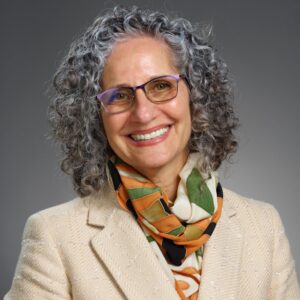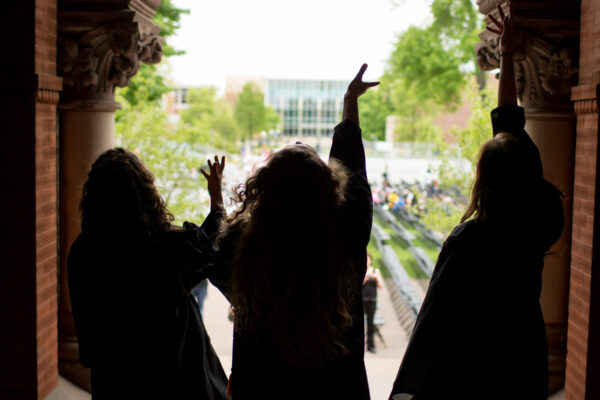As we approach the end of 2023, in an era marked by heightened challenges around the world, it has never been more important for university presidents to serve as steadfast institutional leaders during times of crisis.
Case in point: the COVID-19 pandemic tested every president and every campus beginning in March 2020 and continuing today. During this tumultuous period, I led a campus community as president of the University of La Verne and published several articles addressing the importance of wearing presidential bifocals through the pandemic. Meanwhile, the American Council on Education, where I currently serve as a senior advisor to President Ted Mitchell, provided webinars, blog posts, and other tools that helped me and other campus leaders navigate through the crisis. In other words, the successful president must address what campuses across the country need at any given moment while also working to ensure a successful institutional future.
Today, amid the Israel-Hamas war, campuses are looking to their presidents for leadership both in the moment and for the future. During nearly every recent meeting and conversation I have had with fellow presidents, a primary topic is invariably how presidents should be handling the conversations, protests, and activities that are happening on and around their campuses.
Here are some perspectives, based on past experiences and current conversations, on how best to wear presidential bifocals and lead campuses through this period.
There are four elements that I believe are critical leadership roles for presidents:
- To ensure that students, faculty, and staff on our campuses are safe from physical violence.
- To ensure that students, faculty, and staff have the emotional and mental health support that may be needed.
- To ensure that campuses remain an educational haven for students to learn and demonstrate critical thinking, healthy conversations, perspective taking, and intercultural communication tools to successfully cross lines of difference.
- To continually communicate with the campus and its constituents that these three criteria are of the highest priority for the institution.
Campus safety: There should be a zero-tolerance rule for violence and/or threats of violence by students, faculty, staff, and external constituents. As I speak with presidential colleagues, there is a clear emphasis that demonstrations of violence will not be tolerated on our campuses. Physical contact with intent to harm or hurt another should not be accepted nor permitted. These behaviors with intent to physically harm must have consequences that are clearly communicated to all constituents and enforced.
Mental health and emotional support: Many on our campuses are emotionally impacted by the Israel-Hamas war. Every institution should ensure that those experiencing emotional trauma related to the war have access to the support needed. Faculty and staff should receive training on how to refer students and others to these professionals and eliminate any related negative stigma for seeking assistance.
Educational opportunities: Institutions of higher education must be places where students learn the skills to be critical thinkers graduating with the tools to effectively communicate with those who have differing views and perspectives. The faculty role is to teach, within their curriculum, the tools for critical thinking, reframing, perspective taking, listening, and civil dialogue. Name-calling, ad hominem attacks, discrimination, antisemitism, and anti-Arab harassment and hate have no place on college campuses. This is the opportunity for campuses to establish “rules of engagement,” facilitated discussions, and opportunities for faculty, staff, and students to hold differing perspectives and opinions, while listening and being heard, without fear of retaliation or discrimination inside or outside the classroom.
This first must be demonstrated by the president. Each president must decide whether issuing a personal or institutional statement about matters such as the Israel-Hamas war or other national or international events should be a part of this equation. Some presidents will decide that issuing such statements is part of their portfolio and fits with the institutional mission, while others will refrain from doing so. But there is no question that the president’s role is to create a physically safe environment; to provide mental health resources; and to ensure that students, faculty, and staff have opportunities to engage in healthy, facilitated dialogue that allows for students to hear different perspectives on the situation and, through critical thinking, reach their own conclusions.
Presidential communication: The entire campus is looking to the president to communicate these three conditions consistently during this period of crisis. These are the bifocals to which I refer. What must be done right now is keep campuses safe, healthy, and dedicated to our educational mission of higher education, and look to continue a longstanding healthy campus culture. I understand that these are fragile times, fraught with emotion, varying histories, and innumerable perspectives. Our campuses are hungry for presidential leadership that leads everyone through this moment of crisis with physical and emotional safety and healthy debates while developing the skills to communicate effectively. Your presidential communication throughout these times will be the roadmap for your campus constituents with increased respect for your role and your vision.
If you have any questions or comments about this blog post, please contact us.



